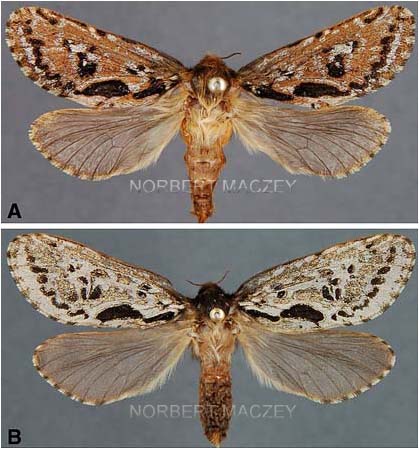Many Chinese and Indian research papers on Cordyceps / Ophiocordyceps still identify the host larvae as belonging to the genus Hepialus. However, since 1968 Hepialus L. is a monospecific genus containing only the European ghost or swift moth Hepialus humuli.
Most former High Asian Hepialus were transferred to Thitarodes Viette back then. In 1968 China had other problems than keeping track of entomological taxonomy, but more than 40 years after the transfer it should be time to follow suit.
Here a more detailed explanation by Dr. Gaden Robinson, an specialist on Hepialidae at the natural History Museum in London. I had asked him to write this short note last year to be included in Andreas Gruschke and my upcoming anthology on Cordyceps sinensis.
Dr. Robinson wrote:
The generic name Hepialus has been restricted in its application to a single European species - Hepialus humuli - for some forty years. The genus Thitarodes was erected in 1968 to (at the time) accommodate "Hepialus" armoricanus (note correct spelling) and another dozen or so related species placed originally in Hepialus and which have nothing whatsoever to do with that genus.
Unaware of recent literature, Chinese entomologists began describing species, associated withCordyceps, in the genus Hepialus in the mid-1980s. By 1999 there were about three dozen recently-described Chinese ghost-moths from the provinces of Tibet AR / Xizang, Yunnan, Sichuan, Qinghai, Yunnan and Gansu that were erroneously placed in Hepialus. However, it is certain that some of these "new species" had already been described by European authors or by other teams in China.
David Wagner, the late Ebbe Nielsen and I (Nielsen et al., 2000) tried to sort it out as best as we could and we published the results in 2000, transferring the Chinese "Hepialus" to Thitarodes to join their congeners. At this point there were 51 described and named species in Thitarodes but, as said above, some of these will prove to be synonyms. The name Thitarodes is well-established and I recommend the use of Thitarodes for all Chinese species described as "Hepialus". In the final analysis, it is still by no means clear which species of Thitarodes are associated with 'commercial' Cordyceps sinensis.
Nielsen, E.S., Robinson, G.S. & Wagner, D.L. 2000. Ghost-moths of the world: a global inventory and bibliography of the Exoporia (Mnesarchaeoidea and Hepialoidea) (Lepidoptera). Journal of Natural History, 34: 823-878.
Viette, P.E.L. 1968. Contribution à l'étude des Hepialidae (36ème note) : Lepidoptera Hepialidae du Népal. Khumbu Himal., 3(1): 128-133.
Fast forward to 2010:
A very interesting article "Hot of the Press" on two newly described ghost moths in the context of the Bhutan Cordyceps field study:
Maczey, Norbert; Kuenzang Dhendup, Paul Cannon, Nigel Hywel-Jones, & Tek Bahadur Rai 2010. Thitarodes namnai sp. nov. and T. caligophilus sp. nov. (Lepidoptera: Hepialidae), hosts of the economically important entomopathogenic fungus Ophiocordyceps sinensis in Bhutan. Zootaxa 2412: 42-52.
Here with consent of the photographer Norbert Maczey photos of Thitarodes ghost moths from Bhutan. I have to admit, so far I only came across drawings or photos of closely relatedHepialus humuli, so it is great to finally have a good images of ghost moths.


A recent Photoshop artwork I made.